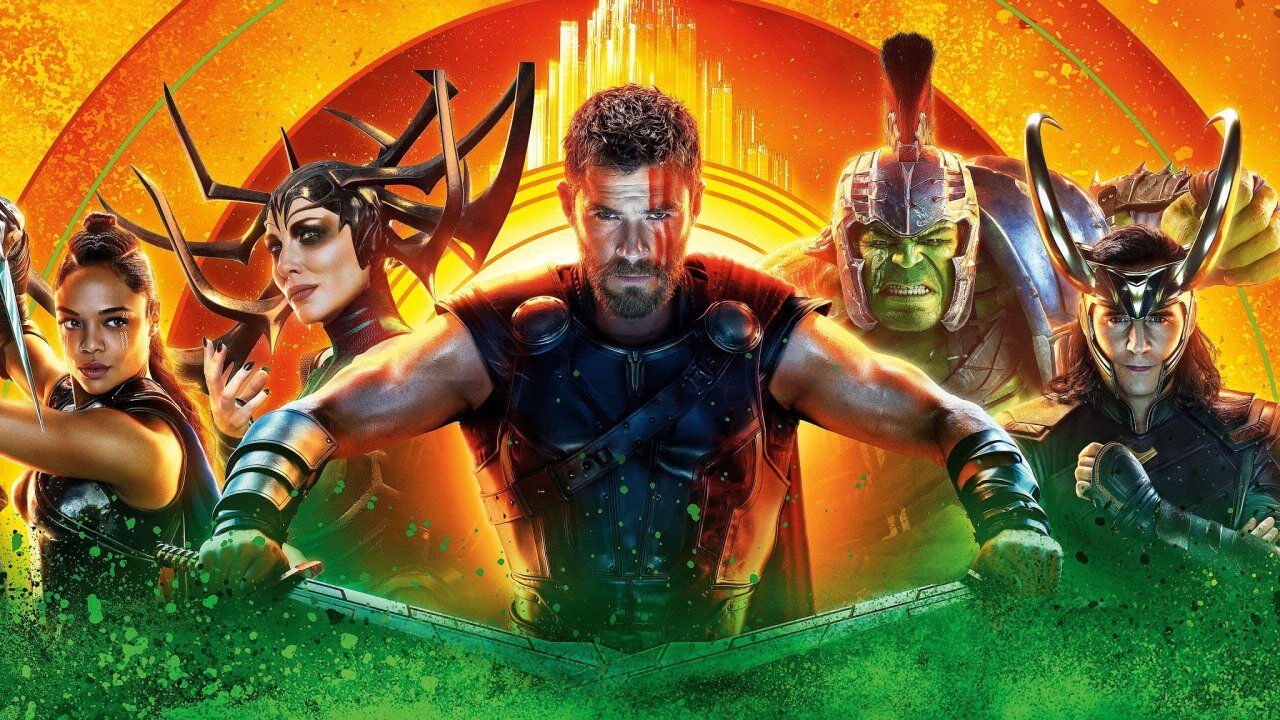‘Thor: Ragnarok’ May Be the Best MCU Movie, And Here's Why
Taika Waititi's unique entry in the Marvel Cinematic Universe (MCU) is a vibrant, action-packed thrill ride through imagination. Thor: Ragnarok breathes fresh air into the MCU, revitalizing the Thor franchise and characters after the less than stellar Dark World. The intense and varied color pallet makes for a truly alien feeling experience unlike anything in the MCU before it and leaving a noticeable mark going forward. Set primarily on Asgard and the junkyard planet of Sakaar, the film follows the titular character, Thor, as he struggles to prevent Ragnarok, the prophesied destruction of Asgard and its people.
Plagued by visions of Asgard burning and crumbling into ruin, Thor seeks out his father Odin, Ruler of the Nine Realms, to stop the coming disaster. Instead, he finds an old man on death's door, no longer able to rule Asgard or resist his wife's call to the great beyond. Odin's death unleashes Hela, Goddess of Death and Odin's firstborn, who returns to Asgard to claim her place as queen by force. Portrayed by the beautiful Cate Blanchett, Hela is threatening enough based solely on her immense power but the acting of Blanchett drives home the revelry that Hela feels walking a battlefield. Even her gait conveys arrogance and barely concealed wanton bloodlust. While attempting to stop her, Thor and Loki are hurled across space and onto the planet of Sakaar. This planet is a crossroads, surrounded by numerous wormholes and doorways, and constantly being bombarded by junk and wayward lifeforms. Thor's quest to save Asgard reunites him with the Hulk, introduces him to the lone surviving Valkyrie, and ultimately forces him to grow beyond what he thought possible of himself and push his powers and responsibilities to new heights. This is achieved in multiple ways, all the credit to the stellar writing and production of the film.
The plot is barely up and running when Hela took Thor's hammer, Mjolnir, from him. This is a devastating blow to Thor early on, removing his means of flight and leaving him without his iconic weapon. As Korg, the Kronan gladiator, puts it "[Thor] had a pretty special and intimate relationship with that hammer and that losing it was almost comparable to losing a loved one." As Thor struggles to wield his powers without channeling them through Mjolnir, Hela has laid waste to Asgard. This to me is a weakness of the MCU in general as there seems to be no consistency in the powers and abilities of the Asgardians. While Hela is able to massacre an entire regiment with nary a scratch and Thor can take a flying Hulk punch to the face and sleep it off, Loki just recently got his butt kicked by a hillbilly in the electronics section during a Class 10 Apocalypse. **SPOILER ALERT for Loki series** Granted the Loki variant known as Sylvie was possessing his opponent at the time, but shouldn't a kick to the torso from an Asgardian be enough to liquefy ribs, regardless of who is controlling the mind?
The design of Sakaar and everything to do with the Grandmaster is one of the best things about the movie. The casting of certified oddball Jeff Goldblum is perfect and the wardrobe and makeup for everyone in his entourage are fresh, unique, and a welcome change from many of the other costuming choices in Marvel movies. This is certainly a strength with the MCU, keeping certain factions, people, or races consistent across multiple movies, from their actions to their clothing. Stark Tech more or less always looks like Stark Tech, same with the Asgardian fashion. The Sakaraans are vibrant and unique but still feel at home in a cinematic universe consisting of planets like Xandar and the Guardians of the Galaxy. A good moment of juxtaposition between these space-faring beings and their technology is Thor entering the Quinjet in an attempt to get off the planet. The gunmetal gray matte interior, complete with safety straps and supply crates feels extremely out of place in this movie and is stark reminder of Thor's time on Midguard (Get it? Stark reminder? Because Tony built it?). A relic from Age of Ultron, the jet is your typical hyper-militaristic vessel seen in every action movie since Schwarzenegger picked up a dumbbell.
While this aesthetic has its place and has been very effectively used in past comic book movies, these projects are at their best when they lean into their roots as graphic novels. The visually engaging art of splash panels and stylized onomatopoeia are the strength of the source material and what solidified comic books in the lexicon of nerd culture. Taika Waititi's signature brand of humor and banter would also be right at home in a comic book and a reason why it works so well in this movie, to a point. The back and forth between Thor and Surtur in the opening scene may have been a line or two too much (especially the eyebrow comment) and Hulk ventures too far into a caricature with some actions and dialogue before returning to his form as Dr. Banner. Overall however, Ragnarok is the strongest of the MCU movies, both in production value and in fun and entertainment. The electrifying visuals, setting, and characters, stellar performances of the cast, and different tone and directorial touch than anything preceding it in the MCU make Thor: Ragnarok the best Marvel film.

